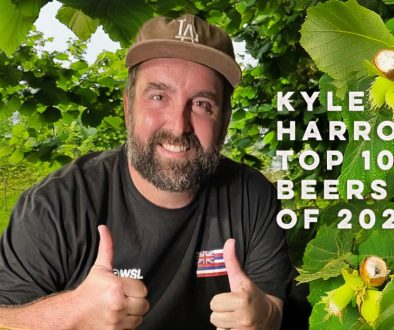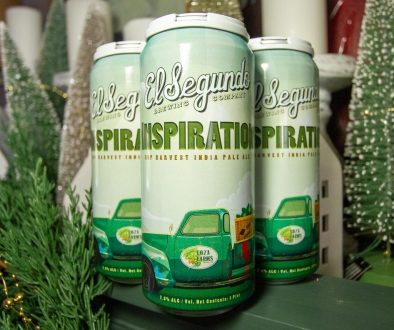In Search of Quality with the Brewers Association
2017 was a busy year for the Brewers Association (BA). It seemed like the theme of the year was Independence with the launch of the new “Independence” logo which encouraged breweries who met the BA’s definition for independence to proudly display the logo on their packaging and in their breweries. Three months later, they launched their “Take Back Craft” campaign with a satirical effort to buy Anheuser-Busch InBev (ABI). Although the BA didn’t quite hit their target of $213 Billion, raising $3.8 million in pledges, many wondered when the BA would address one of the more important issues plaguing the continued success of craft beer: Quality Assurance (QA).
Quality Assurance is more than just producing beer that tastes good at the brewery. It’s producing beer that’s free of defects and then packaged to the highest standard so the beer stays fresh and tasty for as long as possible in the brewery and after it leaves. While QA may be a hugely important part of the continued growth of craft beer and the ongoing success of individual breweries, it’s certainly not as outwardly visible or sexy as the Independence campaign. This is the main reason that the BA’s QA efforts have gone largely unnoticed.
Quality Assurance and best practices have been a central pillar of the BA’s programming since the earliest days of the organization and is the first option available on their website’s drop down menus. “Virtually all of the Brewers Association[‘s website] has practical applications for brewery members,” says Ann Obenchain, Marketing Director of the BA. For many of America’s older craft breweries, their QA programs have grown in league with the BA’s increased focus on quality. “It would be difficult to narrow down the time when New Belgium Brewing started using the resources provided through the BA as part of our quality program. As the BA grew their Quality Assurance resources and tools, NBB has incorporated these into the quality program,” says Dana Sedin, New Belgium Brewing’s Analytical Lab Manager.
Over the years, the QA program has been put into place at breweries of all sizes and provides a wide variety of options depending on a brewery’s development and needs. “Every brewery has a QA program of some sort. At the barest minimum, checking gravities and cleaning tanks are quality measures. The real question for most breweries is whether what they are doing is enough,” says Neil Witte, BA Quality Ambassador
“The BA is a vast resource. It touches upon just about every topic a brewery employee/owner/operator could be interested in. It most definitely provides the blueprint for our quality program,” remarked Rising Tide Brewing’s Rising Tide Brewing’ Quality Control Specialist, Merritt Waldron. It’s the smaller, newer breweries the BA is focusing their attention on. According to Obenchain: “With the recent rapid growth in the number of new breweries entering the industry, the Brewers Association is currently focused on helping our newer members get started with their quality programs. As a brewery grows, they will be able to add additional laboratory space, additional trained employees and expensive equipment.”
Obenchain points out that you don’t even have to be a member to access a majority of the site’s QA information or tools, but membership does have its rewards. “One of my favorite things the BA did was to send every member a copy of Mary Pellettieri’s book, Quality Management,” comments Witte. “There’s great information in there that helps brewers benchmark their own quality program against where they probably should be based on their size. It’s such a great resource and giving it to every member for free was pretty cool.” Non-members can purchase the book from the BA for $95.
Beyond the Quality Management book, the BA provides a wide variety of other materials on their website that cover topics ranging from style guidelines, safety guidelines, USDA guidelines and how they pertain to breweries, material management (hops, malt, packaging, etc), and more. Basically every area of brewing production and management is covered in their best practices section. “Instructional videos and hands-on workshops teach the nuances of the practical skills necessary to conduct quality tests accurately, the workshops help prioritize quality assurance procedures in a growing brewing, Good Manufacturing Practices for Craft Brewers and Food Safety Plan for Craft Brewers provide templates for both implementing the basics of a quality program and complying with local, state and federal regulations,” continues Ann Obenchain.
With a solution for nearly every quality or practices issue a brewery might encounter, the Brewers Association’s website should be the first stop for anyone looking to solve. When Rising Tide Brewing needed to ensure they were using the best practices with their canning line, Merritt Waldron and the brewing staff turned to the BA to ensure they were producing canned product that would meet the brewery’s exacting standards: “We find ourselves putting more and more of our product into cans. Making sure that it survives the retail market and is top quality all the way to the consumers glass is top priority. Therefore, we are currently focusing on improving our packaged beer quality as it relates to shelf life. The BA’s Best Practices Guide to Quality Craft Beer is our jumping off point.”
However, the BA’s resources extend beyond print and web. The BA routinely sends their personnel to various regional conferences, guild meetings, trainings, and other in-person events that breweries can attend to learn about QA methods. Beyond that, there’s always the largest conference they produce, the annual Craft Brewers Conference. It has dozens of seminars and classes available to brewers and brewery personnel covering marketing, safety, packaging, quality, and more. However, it may not be possible for all breweries, especially the smaller ones, to access the CBC and its seminars. “The BA puts on the Craft Brewers Conference every year, but it can be expensive to attend, It would be nice to see a similar conference or meeting with a regional focus where members can get together and share ideas,” says Waldron.
“I would like to see more of is an expansion of one of their newest initiatives, the Quality Instructor program. In that role, Mary Pellettieri holds hands-on workshops that teach brewers practical lab techniques, like cell counts, plating and gram staining. It’s the essential nuts and bolts of a quality program and is incredibly helpful to small brewers. The program just started up in 2017 with two workshops and is set to expand but I’d like to see it grow exponentially faster,” says Neil, describing one of the BA’s newest quality programs. The BA is continuing their efforts to serve their members with programs like this which take years of experience and distill them into valuable workshops breweries around the country can use.
Another important piece of the quality equation is the collaboration between the Brewers Association and the American Society of Brewing Chemists. “The collaboration between the BA and American Society of Brewing Chemists will also lead to new resources and tools for craft brewers to utilize in their quality assurance programs,” says Sedin. The American Society of Brewing Chemists provide advanced tools and knowledge to larger breweries who are well beyond the basics. “Larger, longer established breweries are not as dependent on higher level help from the Brewers Association. Organizations like the American Society of Brewing Chemists offer excellent high-level advanced quality guidance. The Brewers Association has no need to duplicate this existing material,” adds Obenchain.
The Brewers Association has nearly every educational tool a brewer needs to implement a Quality Assurance program in their brewery. It doesn’t take being big and successful to afford an effective QA program. It’s also backwards thinking. The most successful long-term breweries started out with intensive QA programs from the very beginning. Quality and success go hand in hand in the brewing world, without the former your chances of achieving the latter are slim to none. But as the old saying goes, “You can lead a horse to water but you can’t make him run a sensory panel on the what’s in the trough.”




